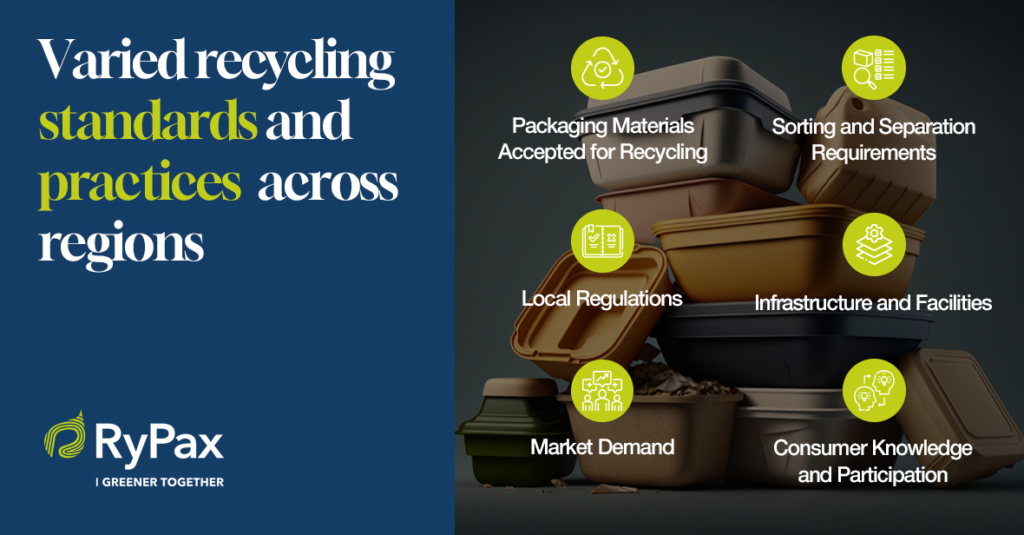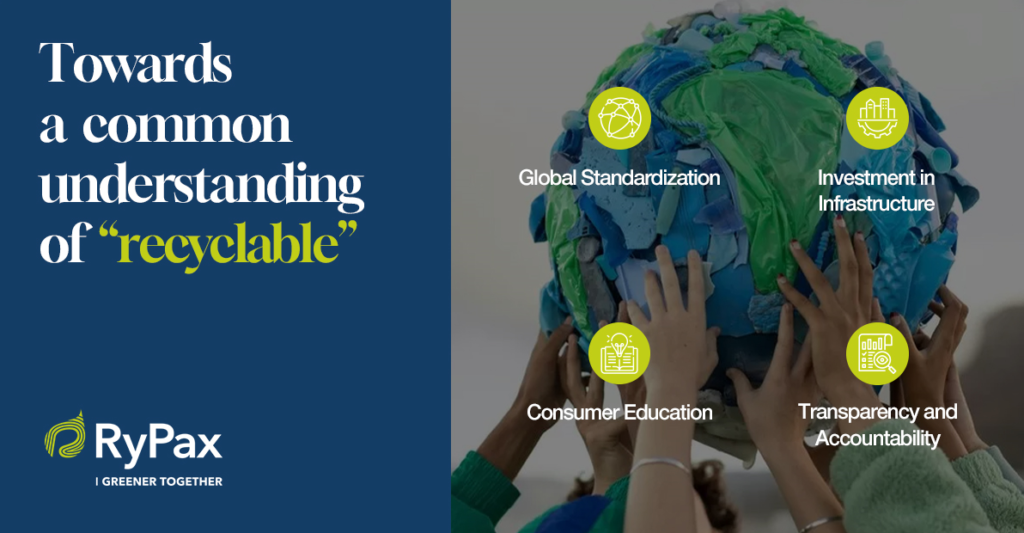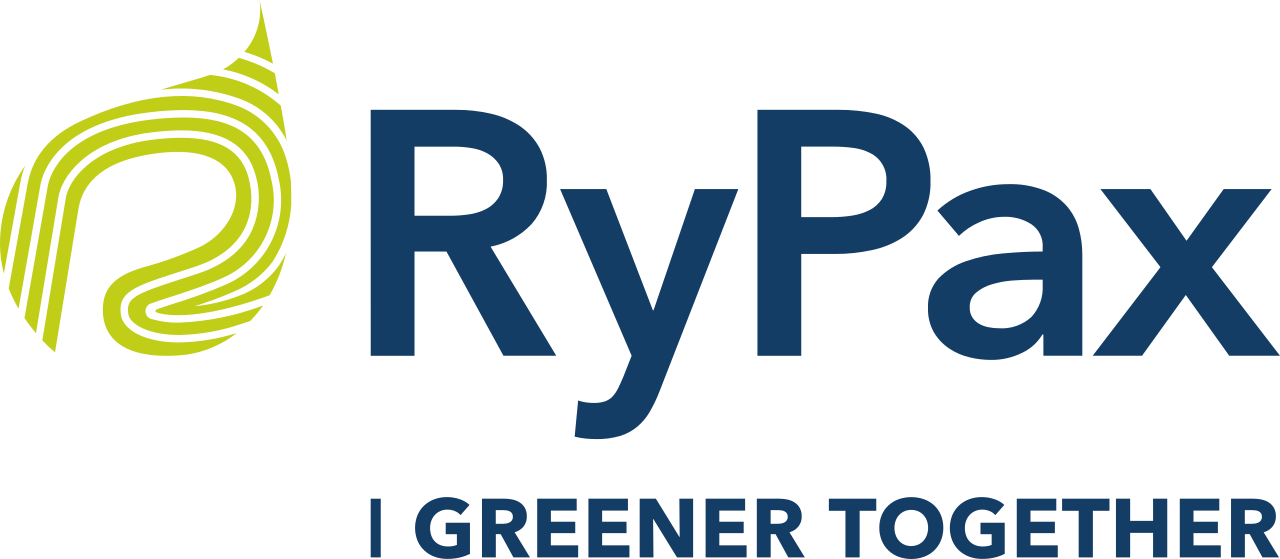Amid the increasing environmental awareness and the urgent need to eliminate plastic waste, the term “recyclable” has gained prominence as a symbol of sustainability.
This is an increasingly pressing situation as the world’s population is projected to grow by over 25% by 2025, reaching 9.8 billion people. Meeting the demand for natural resources to sustain our current lifestyle would require the equivalent of nearly three Earths.
Having high-quality recycling and recycled materials is crucial in a circular economy, where the goal is to make the most of resources by keeping products and materials in use for a long time. This means we generate less waste and use fewer new resources, enabling natural systems to regenerate.
According to the Ellen MacArthur Foundation, the theoretical potential for recycling packaging material may seem promising, but when we consider the practical aspects of recycling – such as collection, sorting, and the actual recycling process – especially when attempting to do so on a large scale and with reasonable economics, we often find that it is may work in a controlled laboratory setting or a single pilot facility, it may not be economically viable to replicate these processes on a larger scale.
What does “recyclable” mean?
The Ellen MacArthur Foundation offers the following definition, “A packaging or packaging component is recyclable if its successful post-consumer collection, sorting, and recycling is proven to work in practice and at scale.”
However, the understanding of what “recyclable” packaging truly means has yet to be agreed upon globally. This variability in interpretation poses challenges for manufacturers striving to implement sustainable packaging solutions on a global scale.
Regional variations in recyclability

The meaning of “recyclable” varies across different regions, creating a global patchwork of recycling standards and practices. This variation arises from several key factors:
- Packaging Materials Accepted for Recycling: In some regions, the term “Recyclable” refers to materials that local recycling facilities have the capacity to process. In contrast, other regions encompass a broader range of materials under the “Recyclable” label, potentially leading to confusion and disparities in recycling definitions.
- Sorting and Separation Requirements: Mechanical recycling, also known as physical recycling, involves the collection, sorting, and processing of recyclable materials without changing their chemical composition. It is commonly used for materials like plastics, paper, glass, and metals. Chemical recycling, also known as advanced recycling, involves breaking down the chemical structure of materials to create new raw materials. This process is more complex and may be used for materials that are challenging to recycle mechanically, like certain plastics.
- Local Regulations: The presence or absence of government recycling regulations and guidelines further complicates the definition of “recyclable.” Some regions mandate the recycling of certain materials, while others lack such regulations, impacting what is classified as recyclable.
- Infrastructure and Facilities: The availability and quality of recycling infrastructure significantly influence what materials are considered recyclable. In areas with well-developed recycling facilities, a broader range of materials is designated as recyclable, while regions lacking infrastructure may limit this definition.
- Market Demand: The demand for recyclable materials can fluctuate depending on the location. Materials are more likely to be labeled as recyclable in regions with a robust market for recycled content, aligning with manufacturers’ efforts to meet the demand for sustainable products.
- Consumer Knowledge and Participation: The awareness and participation of consumers in recycling programs vary greatly from place to place. In regions with well-informed and active recycling communities, a broader array of materials can be designated as recyclable. In contrast, areas with limited awareness may recognize only the most commonly recycled items as such.
Variations in Europe, North America, and Asia
The interpretation of the term “recyclable” varies significantly across continents, adding another layer of complexity for manufacturers:
Europe:
- In Europe, there is a notable emphasis on recycling and sustainability. Many countries boast robust recycling programs and infrastructure driven by strict regulations and ambitious targets.
- The European Union (EU) has played a pivotal role in harmonizing recycling definitions with standardized labeling systems such as the “Mobius loop.” These regulations seek to ensure uniformity in recycling practices across member states.
- However, the packaging industry in Europe has cautioned that a lack of swift progress on waste regulations may further bewilder consumers regarding the disposal of their used packaging.
- By 2030, all packaging in the EU must be designed for recyclability, and manufacturers are expected to ensure it is genuinely recycled “at scale” by 2035. A far-reaching law to standardize rules on packaging waste, including steep targets for cutting material used and reuse of packaging, is currently being studied by the EU’s legislators.
- To simplify waste sorting for everyone, the European Nordic countries have introduced a standardized system of waste symbols.
North America:
- Recycling practices in the United States can vary significantly from state to state and even within municipalities, leading to inconsistent definitions of recyclability. The Environmental Protection Agency reports over 9,800 distinct recycling systems in the United States, each governed by its own distinct set of rules.
- The absence of a federal standard for recycling labeling results in varied interpretations of what is considered recyclable.
- In Canada, a consistent definition of recycling is currently lacking. In May 2023, the government introduced a proposal for new recyclability labels and descriptions. According to the proposal, before introducing a product to the market, regulated entities would need to evaluate the recyclability of the item in every province or territory where it is made available to the public. The proposed labeling system includes a “collected” label until 2030, signifying that an item is gathered for recycling in the regions where it’s sold to the public, even though recycling might not occur.
Asia:
- The recycling landscape in Asia is incredibly diverse. Japan and South Korea, for example, have adopted cutting-edge recycling technologies, leading to a more uniform interpretation of recyclability. They have instituted a comprehensive waste sorting system, with typically four to five distinct bins, each requiring specific bags for collection.
- In contrast, some Southeast Asian countries have struggled with waste management issues, including inadequate recycling infrastructure, which affects the recyclability of materials. An ASEAN Regional Action Plan supported by the World Bank aims to set guidelines for countries to phase out single-use plastics and harmonize regional policies on recycling by 2025.
- Singapore boasts a more advanced recycling infrastructure compared to some neighboring countries, but it does have its limitations. Singapore employs a commingled collection system, where all types of recyclables, including paper, metal, plastic, and glass items, can be placed in blue recycling bins. However, this approach leads to a contamination rate of up to 70 percent in received recyclable waste, rendering it non-recyclable and subject to incineration.
Toward a solution

To address the multifaceted challenges associated with the inconsistent understanding of “Recyclable,” concerted efforts are required:
- Global Standardization: There is a growing need for the establishment of global and regional standards for recycling definitions. Standardized labels can help reduce consumer confusion and enable manufacturers to create products that align with these definitions.
- Investment in Infrastructure: Governments and private sector entities should prioritize investment in recycling infrastructure. A well-developed infrastructure can facilitate the recycling of a wider range of materials, making it economically viable and environmentally responsible.
- Consumer Education: Educating the public about what is truly recyclable is essential. The empowerment of consumers with knowledge about recycling practices and the importance of sustainable choices can drive meaningful change and reduce the disparities in recycling practices around the world.
- Transparency and Accountability: Manufacturers must exercise transparency and accountability in their labeling practices. Misleading or vague labels can undermine trust and hinder progress in achieving sustainability goals.
In conclusion, the term “recyclable” embodies the aspiration for a sustainable future. However, the global variation in the understanding of recyclability highlights the complexities faced by manufacturers.
Manufacturers can boost their compliance with recyclability regulations by transitioning to sustainable alternatives, such as molded fiber packaging made of fast-growing fibers like bamboo, bagasse, and reeds. These materials are recyclable. This factor holds significant relevance for businesses required to comply with Extended Producer Responsibility (EPR) regulations.
As the battle against plastic waste intensifies, ending consumer and manufacturer confusion over recycling is a critical front in the broader mission to protect our planet.











